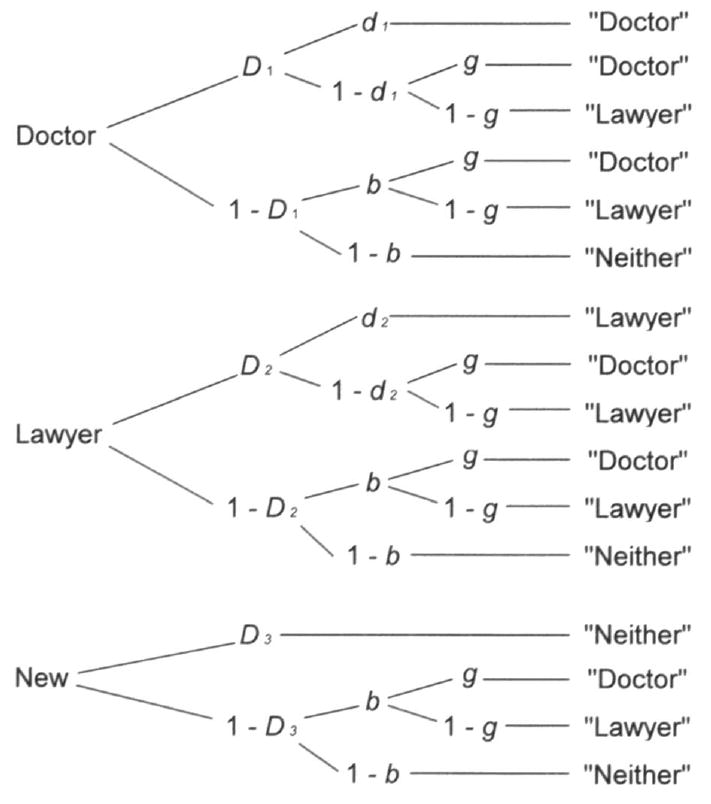Figure A1.
Two-high-threshold MPT Model of Source Monitoring. D1 = probability of recognizing an item that had been presented by the doctor; D2 = probability of recognizing an item that had been presented by the lawyer; D3 = probability of knowing that a distractor item is new; d1 = probability of remembering the source of an item that had been presented by the doctor; d2 = probability of remembering the source of an item that had been presented by the lawyer; b = probability of guessing that an unrecognized item is old; g = probability of guessing that an item had been presented by the doctor. Adapted from “Source discrimination, item detection, and multinomial models of source monitoring” by U. J. Bayen, K. Murnane, and E. Erdfelder, 1996, Journal of Experimental Psychology: Learning, Memory, and Cognition, 22, p. 202.

